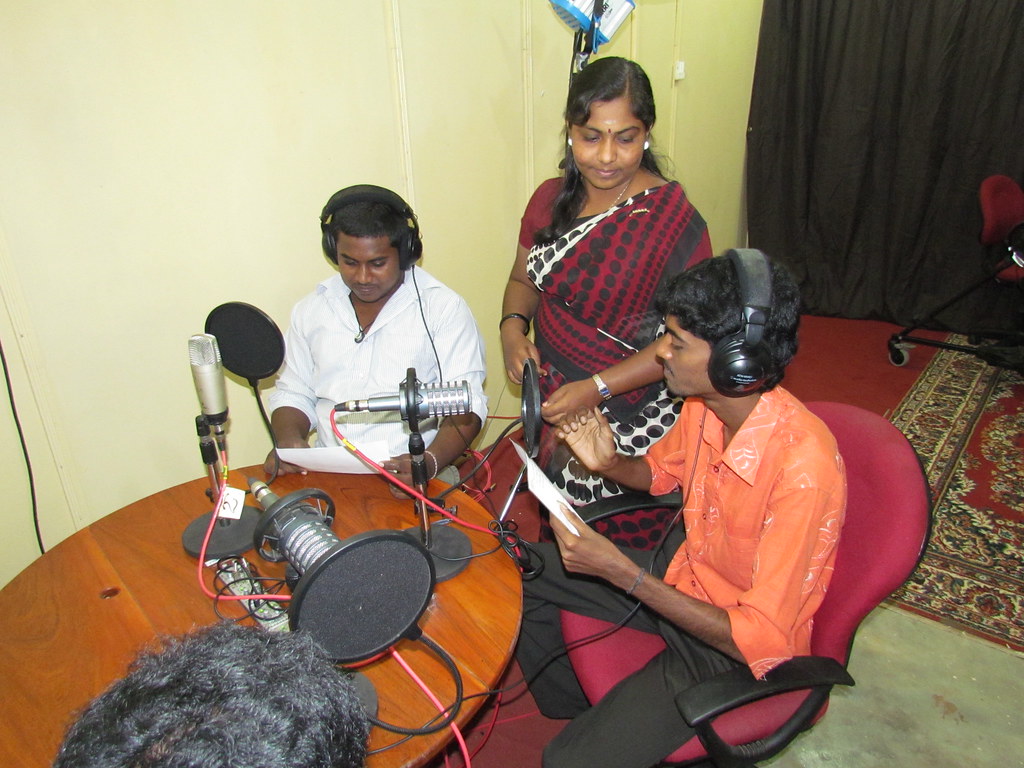
A radio station can only achieve impact if it has a unique and consistent sound and delivers content that the listeners can relate to.
This module includes tips on how to establish a station’s voice and how to promote it in order to increase ratings and influence.
You can put the greatest programmes on the radio but never achieve impact if your station has no unique, consistent sound. If your station or programme has no on-air image that people can relate to, connect with or recognise, how will your listeners know you from your competition and more importantly how will you achieve a rating from all your efforts?
Station sound is a marriage between the many elements that make up the output your station broadcasts, it is the glue that holds everything you transmit together giving you ‘joined up’ radio, on-air consistency that says who you are even before your presenters have identified the station, played a jingle or talked up a show. It’s a ratings winner that’s commonly overlooked.
Each of the 10 steps are prioritised differently to apply appropriately to whatever format your station operates, but the basis of the 10 steps applies whether you are a full service, music station, talk, news, religious or shopping or international channel, the interpretation is dependent on the programmer.
Give six chefs the same recipe and they’ll produce six different cakes. Whatever your format and place in the market (and there’s no reason to say that a small market radio station should sound small), introducing these 10 steps will go a long way towards extending listening hours, reach, share and of course revenue, providing that you care enough about your business and want to provide your listeners with the best product you can.
1: Back to basics – getting the time right
Set up your news, commercials and set times for promo trailers, weather, travel bulletins and what’s on diary items/listings in the same order and at the same time each hour. Listeners will get to know your station pattern of ‘uniquely consistent behaviour’, e.g. travel news follows your weather bulletin.
2: Be consistent in the way you sell your station
Tie your printed logo, registered diary/rating name and on-air identification together in the same way. If your station is called HITS 100, keep it as such, at all times with no deviation. Often I have heard stations (using the example) ident themselves as HITS Radio, FM 100, Music 100, Radio Hits etc. Your main link with a ratings return for your efforts is your on-air identification, decide on one name and keep to it.
3: Manage your sub-brands
Once you have established yourself in the market through your main, on-air station identification, ‘every little helps’ For example HITS 100 News, HITS 100 Weather, HITS 100 Travel, and HITS 100 Sport. Take care when using programme titles as part of your schedule, for example “You’re listening to Weekend Tonight”. It’s in everyone’s interest to promote the radio station name, then the name of the personality in that order. Programme names will weaken your on-air brand; use them at your peril.
4: Achieve cut through with your station voice
Station personality can be as outgoing or discreet as your format and desired place in the market dictates. Start with a voice that reflects your target age group, maybe compliments where you want to be in terms of male/female onair voice balance or age group, start to think about what sort of ‘image’ your chosen voice gives when he/she reads your logo/positioning statement. Fully utilise the voice on ID’s, sweepers, and station promos. If you can integrate the voice into your phone system to greet people then do so.
5: Raise awareness through other media
Promoting yourself through other media is often a costly investment so consistency is important here. Don’t deviate from your station logo and livery when ordering clothing, you’ve probably invested a lot of design money in it to start with. If it’s for staff use they often need to be spotted quickly when on remote/outside broadcasts, bear that in mind. If you’re using television for example, a large percentage of your listeners may not know what your mid morning presenter looks like so try not to spoil the illusion of radio. What is the unique selling point or proposition you are try to advertise, think creatively and challenge the brief, use your presenters selectively in this way, avoiding shots of presenters adjusting headphones in studio at all costs.
6: Write correctly for your station house news style
In news bulletins always think about your listener and make every story relevant to them. If it’s a big story, don’t be afraid to lead the bulletin with audio. When you clip interviewees or have big hitters in your bulletin, include the use of the station name whenever possible. For example, “Speaking on Hits 100 the prime minister said…” or “Speaking to Hits 100 the prime minister said…”
If you use regular contributors for travel and weather information, add them to the pool of available voices and call on them for comments when stories crop up in their field of expertise. Include your broadcast area in weather bulletins but rather than say “the weather for my town and Broadshire…” Something like, “it’ll be mainly dry across My town and Broadshire this evening…” will have more of a direct reference and connection with listeners.
7: Self promotion on your station
If your listening hours average at about 10 per week, that means your average listener can tune in for just under 1.5 hours per day. What else they hear about during that time might encourage them to listen longer or tune in at another time. Use fixed slots to run promotional campaigns and concentrate on your monthly promotional priorities. If you haven’t got the facility to put together built promos every time, talk up sheets with the bare detail and ad-libbed by the presenter are a great substitute.
8: Keep your on-air sound familiar
If your station is known for news weather and travel, keep it that way and present it in that order. Listeners like consistency especially when commuting; they like to know that when the half past headlines come on, that it is half past the hour, even without a time check and that the weather will follow those headlines if that’s the usual case. Chances are listeners could time their journey by landmarks arrived at whilst hearing key programme points and junctions on your station utilise this routine. Use standard out cues on your travel, weather and news bulletins.
9: Remember your on-air identity
Some sort of station identification across your output is key for recognition and memorability. Jingles, sweepers and voiceovers play a big part in showcasing your station personality and setting the mood in the first place. They are the biggest building blocks you have in creating your station sound. Fashion and the market place often dictate what’s currently popular. Avoid jingles for everything; your presenters will probably want a jingle for every feature and event you broadcast. The likelihood is that only a few will be played, favourites will begin to show and often at the same time each day if they are incorporated into a built play-out system running order, predictable.
10: Write a sound style guide for your staff
In order to benefit from utilising the previous nine points, it’s essential that your house style is recorded and made available to station staff. Write a station house style guide incorporating the above pointers interpreted correctly for your station sound. Publish it as a freely available booklet that shows pride and commitment to your area and the level of importance of such a publication – not just a paper handout. That way it will have much more impact and will be a useful training manual for new staff and ensure that existing staff work in and around the style or sound you wish to create.
These points are a glue to bind the individual aspects of your output into a clear, focussed, consistent sounding radio station that can make the smallest station sound big, joined up and connected. Utilise each of the points as you see fit for your format.








